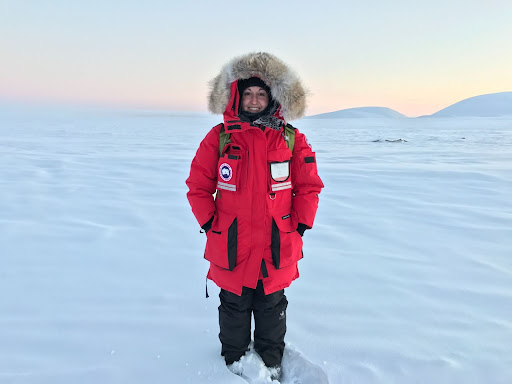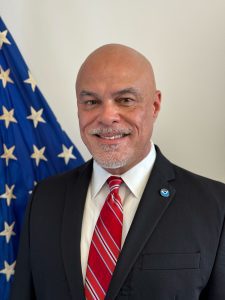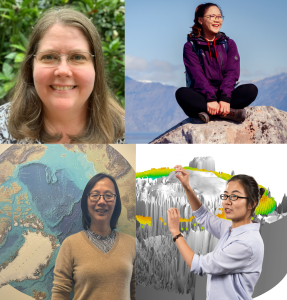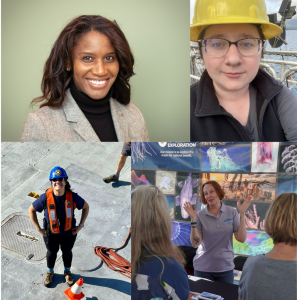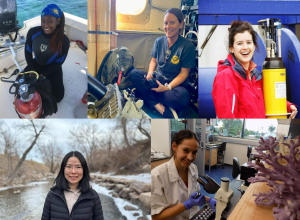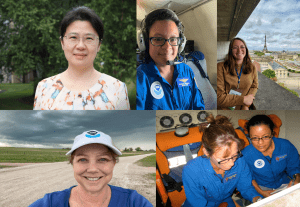To celebrate Women’s History Month, we asked women throughout NOAA Research who make lasting impacts in scientific research, leadership, and support from the field to the office to share how their work contributes to NOAA’s mission of Climate Resilience and preparing for a Climate-Ready Nation. This article highlights an interview with Sara Morris, a physical scientist and team lead for the Atmospheric Measurement Network under the Observatory Operations Division at NOAA’s Global Monitoring Laboratory (GML).
Our conversation follows:
What does climate resilience or climate-ready nation mean to you? What would you want people to know about NOAA’s work on climate resilience?
A climate-ready nation means to me that as a nation we are operationally ready to mitigate and react to global climate threats. Meaning that we have scientific equipment ready to observe and collect global data, we are able to efficiently feed information into forecast models, and predict both the location and magnitude of upcoming climate disasters. I want people to know that at NOAA specifically, we are moving to operationalize and standardize the measurements that we collect and make sure that those measurements will reliably be collected with minimal data loss, and that we are very mindful of the time sensitive nature of our measurements. We understand that for data to be operational, it needs to be understandable or readable – and we are continuously working toward getting data collected and processed promptly in formats preferred by both observation and model communities, so that they can more efficiently ingest our data to make near-real time assessments and forecasts.
What projects or research are you working on now, and how does your work contribute to climate resilience?
Currently, I am working on organizing a new network called the Atmospheric Measurement Network that harmonizes greenhouse gas measurements collected by the Global Monitoring Laboratory at their tall-towers, aircraft and surface sites across the US. I come from a background in Arctic climate observations, so I’m taking what I’ve learned in the Arctic regarding the management and collection of many types of data at international Arctic sites into this new team. Our goal with this new network is to standardize our measurement systems across these different platforms to better operationalize our data collection process and instrument/facility maintenance procedures, which directly ties to NOAA’s contribution to climate resilience.
What do you enjoy most about your work?
What I enjoy most about my work is getting in the field and visiting very remote, usually Arctic, places.A lot of being a scientist is sitting at a computer and looking at data, but in my field of work I’m lucky enough to get to actually install many of the instruments that collect the data we are interested in. I also get to do a fair amount of work in scientific labs in our building, so that’s always exciting – it’s great having a varied task list with respect to office/lab/field work. An added bonus is that I get to work with some pretty amazing people from all walks of life, from all over the world.
Do you have a favorite moment or accomplishment in your career?
I have two favorite moments in my career, the first moment was during a massive international, year-long experiment called MOSAiC. This experiment had many great moments, but the overall success of this experiment was one of my greatest accomplishments. This experiment brought together over 19 different nations to embark on an Arctic experiment where we sailed an icebreaker into the heart of the Arctic Ocean and let it drift alongside an ice-floe for an entire year – capturing valuable datasets that had never been captured before. This experiment was the first of its kind, and took many years to prepare. In the end, our team was able to collect and process data that will further Arctic research and improve forecast models for decades. My second moment came about a year after MOSAiC ended, when I produced a short documentary style video that captured some of the events at MOSAiC. This video focused on showcasing the challenges (and successes) of collecting data in such a remote, harsh and extremely cold environment. It was very well-viewed and served as a great platform to inform others at NOAA and beyond how we conduct research in the Arctic.
What would you tell someone who wants to do climate-centered work, but doesn’t know where to start?
If someone is interested in climate research, but doesn’t know where to start, I would recommend either starting an academic career in environmental science or starting a technical career in instrument or electrical work. Most environmental programs provide a large-scale view of environmental issues and research, and really touch the surface of climatology factors. I would also look for opportunities to begin work as a technician, in either the lab or field. These field or lab experiences are invaluable and really let you start to see how measurements are collected, and also understand what type of environment you are most interested in pursuing. For example, I knew I wanted to do something with climate science, but I wasn’t sure where – so I started working as a tech right after getting my bachelor’s degree, and that work introduced me to many different fields of climate science. Once I was able to hone in what most interested me, I was able to direct my career (and further my education) in pursuit of the type of climate research that best suited me.
Special thanks to Sara Morris for participating in this interview for Women’s History Month at NOAA.
